NXTLVL Experience Design
Episode 62: Ken Nisch
“How Retail Leaders Create Environmental, Social & Cultural Innovations,” with Ken Nisch, Chairman, JGA
Published
5 months agoon
By
David Kepron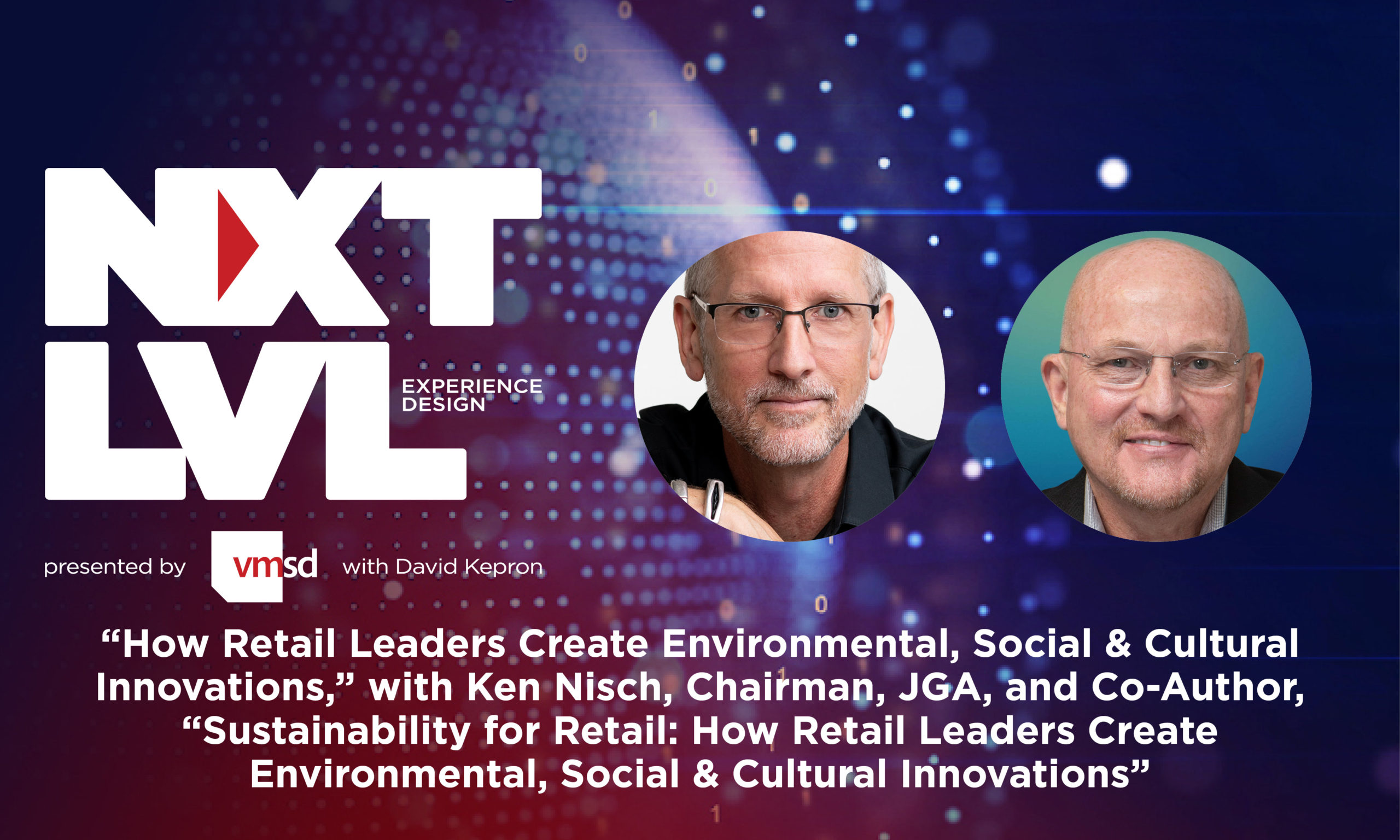
EPISODE SUMMARY
Ken Nisch is a leader in the retail design world and Chairman of JGA an internationally recognized design firm. Ken’s new book, co-authored with Vilma Barr, called “Sustainability for Retail: How Retail Leaders Create Environmental, Social and Cultural Innovations” details the activities of retail companies, manufacturers and suppliers who have embraced a sustainability practice worthy of special mention. Host David Kepron and Nisch deep dive into talking about major international brands and their initiatives to put sustainability at the core of their businesses.
EPISODE NOTES
ABOUT KEN NISCH:
Ken’s LinkedIn Profile: linkedin.com/in/ken-nisch-a1922325
BIO:
No one knows retail better than Ken. His resume includes brands big and small, local and global – with an award list to match. His consumer knowledge and entrepreneurial insights have been an integral part of the conceptual development and strategic image positioning for many retail operators, manufacturers and brand marketers in multiple verticals for more than 40 years.
Ken has been named a “Retail Luminary” and “Retail Influencer.” He was inducted into the Retail Design Institute Legion of Honor, recognizing his outstanding career achievement in the field of retail store design and also presented with the Asia Retail Leadership Award at the Asia Retail Congress in Mumbai, India.
AdvertisementClients
Allen Edmonds, Blue Nile, Disney, El Palacio de Hierro, Five Below, Hershey’s, H&M, Mayo Clinic, Museum of Arts and Design, Paradies Lagardère, Signet, Sleep Number, Sundance, The North Face, Warner Bros., Whole Foods Market
Recognition
Inducted into the Retail Design Institute Legion of Honor, recognizing his outstanding career achievement in the field of retail store design.
Asia Retail Leadership Award – Honored at the Asia Retail Congress in Mumbai, India.
Advertisement
SHOW INTRO:
Welcome to the NXTLVL Experience Design podcast.
These dynamic dialogues based on our acronym DATA – design, architecture, technology, and the arts crosses over disciplines but maintains a common thread of people who are passionate about the world we live in and human’s influence on it, the ways we craft the built environment to maximize human experience, increasing our understanding of human behavior and searching for the New Possible.
The NXTLVL Experience Design podcast is presented by VMSD magazine.
VMSD is the publisher of VMSD magazine and brings us, in the brand experience world, the International Retail Design Conference. The IRDC is one of the best retail design conferences that there is bringing together the world of retailers, brands and experience place makers every year for two days of engaging conversations and pushing the discourse forward on what makes retailing relevant.
You will find the archive of the NXTLVL Experience Design podcast on VMSD.com.
AdvertisementThanks also goes to Shop Association the only global retail trade association dedicated to elevating the in-store experience.
SHOP Association represents companies and affiliates from 25 countries and brings value to their members through research, networking, education, events and awards. Check then out on SHOPAssociation.org
In this episode I talk with Ken Nisch Chairman of JGA an internationally recognized design firm. Ken recently has also co-authored with Vilma barr a new book titled Sustainability for Retail: How Retail Leaders Create Environmental, Social, & Cultural Innovations.
It is a great global overview of retailers and brands who are leading the way on how sustainable deign practice will shape retail places in the new future.
Before we get into the talk with Ken a few thoughts on sustainability and retail place making.
***********
Over the past couple of seasons of the show I have had a handful of guests who have focused our discussion on sustainability –
the internationally acclaimed designer Bruce Mau, of Massive Change Network where we talked about his life and approaches to design and a number of the key ideas from his book “Massive Change”
Denise Naguib of Marriott International,
Christian Davies of Bergmeyer,
Martin Kingdon of Popai and how the sustainability issue is being addressed in the UK and Ireland,
architect Yasmine Mahmoudieh whose eco-centric mindset shapes her design approach with sustainable materials like mycelium
and a few seasons ago, Caspar Schols who created Cabin ANNA a truly innovative house design that literally transforms, opening up to the elements placing its inhabitants under the stars, should they want to be, while they sleep.
The conversations have covered a lot of ground ranging from talking about the impact of packaging covering the products we buy every time we visit a store. It doesn’t really matter what type, could be clothing, hardware or grocery, packaging figures prominently in all of them…
…to the footprint of a global hospitality behemoth with over 8000 hotels most of whom provide hotel guests with a couple bottles of water when they arrive – A nice amenity with a potentially huge ecological impact since, despite how much we may believe in recycling a lot of those bottles still end up in a landfill.
This by the way, is not simply a Marriott hotels issue, it applies to the hotel industry as a whole.
We’ve discussed the impact of the building industry at large with respect to its contribution to CO2 in the atmosphere and therefore th e global climate crisis. I think that most of us who are connected to the building industry either as architects and designers, manufacturers, general contractors, installers and other suppliers to the built environment, are increasingly aware of the implications of putting millions of square feet of new buildings on good ‘ole ‘terra firma.’
It is estimated that about 40% of CO2 emissions are related, in some way, to the building construction industry.
When we think about being a good steward of this planet that we have been gifted, is not just about doing ‘less bad.’ It’s about a fundamental shift in the way we see ourselves in relation to this little blue dot.
I think it’s about appreciating that the planet has been here a long, long, time before we ever walked it and it will be here a long time after we are gone.
The irony is that when humankind leaves mother earth, as I suspect we will, evolving into an interplanetary species, she will be just fine without us. I don’t think she will pine like a parent after dropping her young adult off at college and eagerly await their return at the holidays.
There are some who say that it is already too late; that the current efforts to stem the effects of pumping toxins into the air and seas leading to climate change and the potential for an ecological catastrophe, are not going to reverse what is already well on its way.
But that would be to live without hope and so, there are those who hold to the idea that if we created this state of affairs, we can uncreate it.
That we have designed our way here and we can therefore design our way out.
And in that, I find the encouragement to continue on believing that design, while not the only contributing factor in solving the climate issue, is a fundamental piece in the solution.
Let’s assume we too will be here for a long, long time and that the cynical view of us leaving scorched earth behind as we rocket off to evolve into an inter planetary species, perhaps to do it again elsewhere, will not come to pass.
Suppose what is now a rumbling becomes a global cacophony of ‘hell no,’ we learn, and we collectively embrace the idea that our current path is unsustainable.
To get there, everyday people, governments, associations, brands and retailers need to do more and talk about what they are doing more. Policy and practice at the level of governing a nation, a business or your family needs to put the discussion at the head of the spear and keep it there.
Sustainability has become a defining feature of why a consumer will or will not align him or her self with a brand.
How the core ideological ideas around ESG and DEI that underpin a brand come to life in an experience place are critical determinants of engagement.
The principles on which a company stands related to sustainability can make or break the connection between a brand or retailer and a consumer. It’s not just what they say but what they do that makes a difference.
This is a two-way ‘putting your money where your mouth is.’
Businesses that invest in sustainability initiatives enhance the likelihood of consumers investing in them.
Emerging consumers want to know that companies align with their individual points of view on these issues for brand adoption to happen.
Consumes want to know if the brand promotes ideas, policies and practices that match theirpersonal positions rather than, as a consumer, they are attaching themselves to a brand to accrue a sense of identity or belonging to the brand’s platform.
This may seem like a subtle shift, but consumers show up already certain about their mindset on issues of sustainability and they quickly determine whether or not the brand is on their team – not the other way around.
And so, when you read a book like “Sustainability for Retail: How Retail Leaders Create Environmental, Social, & Cultural Innovations” by this episode’s guest Ken Nisch, you get an overview of how the sustainability issue is being highlighted by standouts in the retail industry around the world.
Ken and his co-author Vilma Barr provide a well-rounded summary of retail brands and companies who are ‘doing the right thing.’
Use to be that many of them didn’t wear their efforts on their sleave, they just planted trees or sustainably sourced materials or engaged in fare trade practices because they believed it was, well… the right thing to do. Seemed obvious to them.
As they pursued the sustainable path, not beating their chest, in self-congratulations, their efforts were certainly having positive impact on the planet but maybe not in heightening awareness and the urgency to act now.
Well… a lot of that has changed in recent years and customers want to know where brands stand on the issues. As awareness grows, change gets a foot hold and conscious awareness of the issues becomes increasing woven into how retailing is done.
When someone like Ken Nisch canvases the retail world to promote companies who are addressing the sustainability issue, he does it from a place of knowing who’s who.
His resume includes brands big and small, local and global – with an award list to match. His consumer knowledge and entrepreneurial insights have been an integral part of the conceptual development and strategic image positioning for many retail operators, manufacturers and brand marketers in multiple verticals for more than 40 years.
Ken has been named a “Retail Luminary” and “Retail Influencer” by design:retail Magazine and currently serves on their Editorial Board.
He was inducted into the Retail Design Institute’s Legion of Honor, recognizing his outstanding career achievement in the field of retail store design.
He was also presented with the Asia Retail Leadership Award at the Asia Retail Congress in Mumbai, India.
Ken Nisch has worked with Disney, Hershey’s, H&M, Mayo Clinic, Sleep Number, Sundance, The North Face, Warner Bros., Whole Foods Market and a host of other great brands.
In this discussion, Ken Nisch and I unpack a number of efforts being done on the sustainability front by companies in the retail industry.
There are certainly more than those I pull from Ken’s book for us to talk about.
What “Sustainability for Retail…”clearly establishes is the idea that the ground swell of initiatives that retailers and brands are taking on will likely grow changing the retail landscape.
Talking about these issues increases awareness.
The outgrowth of these concepts being at the forefront of our thinking as we create retail stores, is that places of customer engagement remain relevant as crucibles for more than simply the exchange of goods and services.
They are places where ideas and commerce are connected.
Stores are much more than a place to get something at a good price. They can be places where ideas that matter, that concern us all, come to life.
ABOUT DAVID KEPRON:
LinkedIn Profile: linkedin.com/in/david-kepron-9a1582b
Websites:
https://www.davidkepron.com (personal website)
vmsd.com/taxonomy/term/8645 (Blog)
Email: david.kepron@NXTLVLexperiencedesign.com
Twitter: DavidKepron
Personal Instagram: https://www.instagram.com/davidkepron/
NXTLVL Instagram: https://www.instagram.com/nxtlvl_experience_design/
Bio:
David Kepron is a multifaceted creative professional with a deep curiosity to understand ‘why’, ‘what’s now’ and ‘what’s next’. He brings together his background as an architect, artist, educator, author, podcast host and builder to the making of meaningful and empathically-focused, community-centric customer connections at brand experience places around the globe.
David is a former VP – Global Design Strategies at Marriott International. While at Marriott, his focus was on the creation of compelling customer experiences within Marriott’s “Premium Distinctive” segment which included: Westin, Renaissance, Le Meridien, Autograph Collection, Tribute Portfolio, Design Hotels and Gaylord hotels.
In 2020 Kepron founded NXTLVL Experience Design, a strategy and design consultancy, where he combines his multidisciplinary approach to the creation of relevant brand engagements with his passion for social and cultural anthropology, neuroscience and emerging digital technologies.
As a frequently requested international speaker at corporate events and international conferences focusing on CX, digital transformation, retail, hospitality, emerging technology, David shares his expertise on subjects ranging from consumer behaviors and trends, brain science and buying behavior, store design and visual merchandising, hotel design and strategy as well as creativity and innovation. In his talks, David shares visionary ideas on how brand strategy, brain science and emerging technologies are changing guest expectations about relationships they want to have with brands and how companies can remain relevant in a digitally enabled marketplace.
David currently shares his experience and insight on various industry boards including: VMSD magazine’s Editorial Advisory Board, the Interactive Customer Experience Association, Sign Research Foundation’s Program Committee as well as the Center For Retail Transformation at George Mason University.
He has held teaching positions at New York’s Fashion Institute of Technology (F.I.T.), the Department of Architecture & Interior Design of Drexel University in Philadelphia, the Laboratory Institute of Merchandising (L.I.M.) in New York, the International Academy of Merchandising and Design in Montreal and he served as the Director of the Visual Merchandising Department at LaSalle International Fashion School (L.I.F.S.) in Singapore.
In 2014 Kepron published his first book titled: “Retail (r)Evolution: Why Creating Right-Brain Stores Will Shape the Future of Shopping in a Digitally Driven World” and he is currently working on his second book to be published soon. David also writes a popular blog called “Brain Food” which is published monthly on vmsd.com.
The next level experience design podcast is presented by VMSD magazine and SmartWork Media. It is hosted and executive produced by David Kepron. Our original music and audio production by Kano Sound.
The content of this podcast is copyright to David Kepron and NXTLVL Experience Design. Any publication or rebroadcast of the content is prohibited without the expressed written consent of David Kepron and NXTLVL Experience Design.
Make sure to tune in for more NXTLVL “Dialogues on DATA: Design Architecture Technology and the Arts” wherever you find your favorite podcasts and make sure to visit vmsd.com and look for the tab for the NXTLVL Experience Design podcast there too.
David Kepron is formerly the VP - Global Design Strategies – Premium Distinctive Brands at Marriott Intl., responsible for the strategic design direction for Westin, Le Meridien, Renaissance, Autograph Collection, Tribute Portfolio, Design Hotels and Gaylord Hotels. He is also the founder of Retail (r)Evolution, LLC and NXTLVL Experience Design, LLC. In his latest venture, NXTLVL Experience Design, Kepron brings years of retail and hospitality design expertise to the making of meaningful customer connections at brand experience places around the globe. His multidisciplinary approach to design focuses on understanding consumer behavior and the creation of relevant brand engagement moments at the intersection of architecture, sociology, neuroscience and emerging digital technologies. As a frequently requested speaker to retailers, hoteliers and design professionals nationally and internationally, David shares his expertise on subjects ranging from consumer behaviors and trends, brain science and buying behavior, store design and visual merchandising as well as creativity and innovation. @davidkepron; www.retail-r-evolution.com.

FEATURED VIDEO
MasterClass: ‘Re-Sparkling’ Retail: Using Store Design to Build Trust, Faith and Brand Loyalty
HOW CAN WE EMPOWER and inspire senior leaders to see design as an investment for future retail growth? This session, led by retail design expert Ian Johnston from Quinine Design, explores how physical stores remain unmatched in the ability to build trust, faith, and loyalty with your customers, ultimately driving shareholder value.
Presented by:
Ian Johnston
Founder and Creative Director, Quinine Design
Advertisement

South Coast Plaza Adds Luxury Boutiques

Cracker Barrel Testing Reno Prototypes

Government Stats Show Lower Inflation
SUBSCRIBE

Bulletins
Get the most important news and business ideas from VMSD magazine's news bulletins.
Advertisement
Most Popular
-
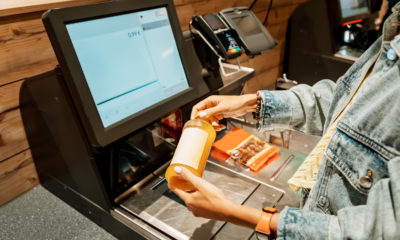
 Headlines1 week ago
Headlines1 week agoTarget Self-Checkout Used to Steal $60,000 in Merch
-
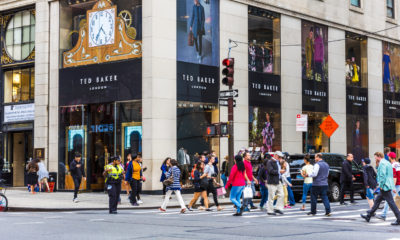
 Headlines4 days ago
Headlines4 days agoTed Baker Stores Closing in U.S. and Canada
-
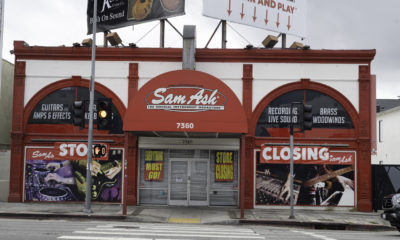
 Headlines2 weeks ago
Headlines2 weeks agoSam Ash Music Shutting All Stores
-

 Headlines1 week ago
Headlines1 week agoNY Authorities Shutter Retail Fencing Operation
-

 Headlines2 days ago
Headlines2 days agoRed Lobster Closes 90 Locales
-
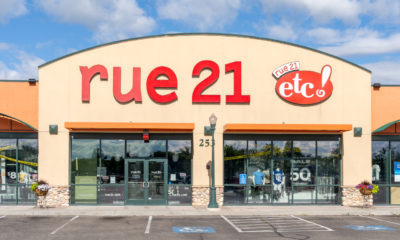
 Headlines2 weeks ago
Headlines2 weeks agoRue 21 Closing All Stores: Report
-

 Headlines3 days ago
Headlines3 days agoTwo Japanese Retailers Set U.S. Entry
-
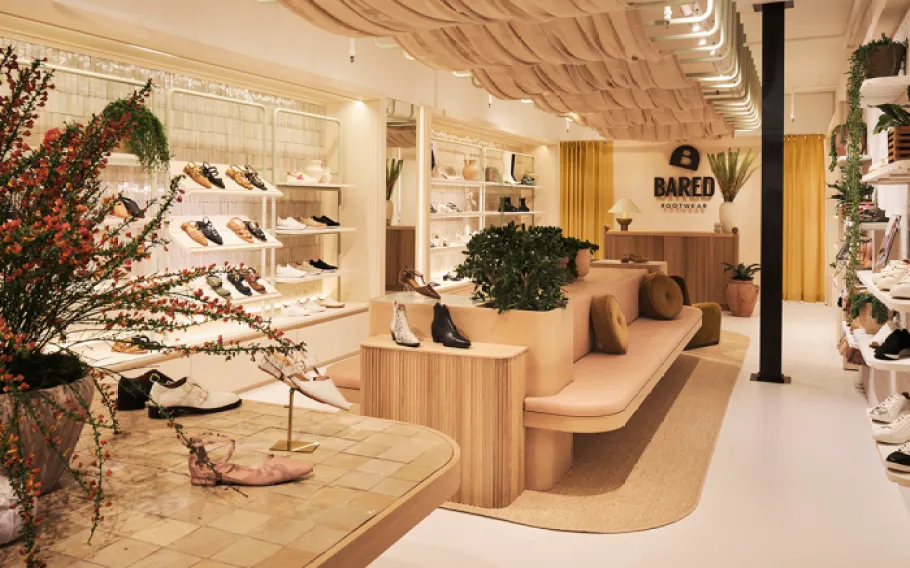
 Headlines1 week ago
Headlines1 week agoAustralian Footwear Brand Opens First US Store













